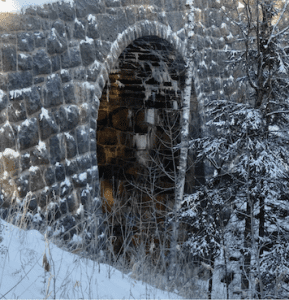Click here to support the teaching practice of Dōshō Rōshi at Patreon.
One helluva teacher
This is the last post in this sub-series on Tiāntóng Rújìng (1163-1228), the last Chinese teacher in the Cáodòng/Sōtō lineage of Eihei Dōgen (1200-1253), and nearly the end of this series on the great teachers surrounding Dōgen (at least for a while). Next up, “Seven Stumbles, Eight Blunders: The Life of Tetsu Gikai,” which should be cooked through and ready to serve up next week.
My task in this post-mortem post on Rújìng, though, is to offer a few summary observations, borrow a bit from Steven Heine, and then present Rújìng’s dying poem with a few explanatory comments.
One of the most striking points
about Rújìng’s teaching is how the tone is so different than his most well-known successor, Dōgen (more about Rújìng’s other successors here).
Rújìng, you see, is as vigorous and direct as Dōgen is cultivated and subtle. For example, when he became abbot of Qingliang Temple, one of the most largest and prestigious monasteries in China, the following is recorded:
“Pointing to the Buddha Hall, he opened the hall and saw the Buddha: ‘A poisonous thorn in the eye – ouch! – pull it out and throw it away. Do prostrations, burn incense, overturn everything and put it down bluntly.’”
And then later,
“Sitting in the Abbot’s quarters: ‘Pluck out Bodhidharma’s eye, make it a mud ball to hit people with.” Raising his voice he said, “Look! The sea dries out all the way through the bottom. The waves strike high into the sky.’” (1)
Even in these two short passages, Rújìng’s intense vividness is palpable. And I hope you’ll be able to taste some of Rújìng’s dynamic spirit in his dying poem below. As you may have heard, it has been said that the Cáodòng/Sōtō is characterized by being precise and intimate (細密), while the Línjì/Rinzai line is characterized by being painful and quick (痛快).
Rújìng’s teaching, however, a Cáodòng/Sōtō teacher, seems more in line with the painful and quick than the precise and intimate. Indeed, differences between Zen teachers, especially in the classical period, seem to be more about their particular personalities, rather than what lineage they happen to represent. And as was noted in an earlier post, Rújìng’s students didn’t even know his lineage until he about to die.
Yet, despite Rújìng and Dōgen having different personalities and teaching tone, at heart there is a continuity of essential message from all the buddha ancestors through Rújìng and Dōgen to us – awaken with this great life here and now, live congruently with awakening, offer the warm hand of great compassion to all living beings, and share the dharma with the next generation.
The Buddhist scholar, Steven Heine,
summarizes how Dōgen sang the old man’s praises:
When he wrote the Treasury chapter “Sustained Exertion,” Dōgen praised Rújìng’s own unswerving commitment to zazen from the time of his entrance into the Buddhist community at the age of nineteen to his Tiantong abbacy forty-five years later.
Dōgen wrote, “Throughout China, only my late master demonstrated true determination. Monks far and wide were alike in praising Rújìng for practicing just to practice, yet he did not praise all monks far and wide because they were generally stubborn or selfish.”
Also, Rújìng did not compromise his values by associating with the imperial family, and he often turned down generous offerings from lay followers if they were unable to express the meaning of the dharma. Stalwart meditators flocked to his temple from all parts of the country, and he enthusiastically accommodated monks arriving from Korea and Japan. Rújìng also made room in the training area for irregular practitioners, such as Daoists and shamans, to line up behind the female clerics as part of a hierarchical system that recognized the priority of male monastics. (2)
In Dōgen’s eye, then, Rújìng was a master of zazen who taught by example, while also demonstrating a warm inclusivity to those at the periphery of the male-dominated, elite monastic system.
And, then, he died.
But before death, he wrote a dying poem (辞世, cí
Words for the World – Rújìng’s Dying Poem
Sixty-six years
committing crimes that
fill the heavens
leaping! falling alive
into Yellow Springs
look! according with
life-death has nothing
to do with it
whole-body stupa
my native monastery (3)
Let’s take a quick look at Rújìng’s words for the world.
First, what about those crimes?
What crimes could a guy commit who rigorously upheld both the monastic and bodhisattva precepts, sitting zazen night and day for most of his life? Well, one point is that we’re all in this mess together and there’s nowhere to hide our culpability. Another is the famous injunction – “open your mouth, one mistake; shut your mouth, another mistake.”
“Yellow Springs” (黃泉, aka, dark realms) refers to the postmortem process and the underworld of the spirits of the dead – a Chinese Buddhist hell, “… typically depicted as a subterranean maze with various levels and chambers, to which souls are taken after death to atone for the crimes they committed when they were alive.”
What is a great sage like Rújìng doing descending into hell rather than ascending into heavenly bliss?
In The Record of Empty Hall, Case 38: Baoying’s “Immediately Entering Hell” has this: “A monk asked the solemn Venerable Baoying, ‘All the sages have passed through to what place?’
Ying said, ‘Not going up to god realms. Immediately entering hell.’”
So too goes old Rújìng.
As for “…according with life-death has nothing to do with it,” again, Rújìng’s vigorous spirit is on display. “It” must mean liberation. “Passively going along won’t do,” shouts the man leaping into hell.
“Whole-body stupa,” points inside and out to the ten-direction world as the memorial of his one life-death.
And, finally, as for “…my native monastery,” this could be translated in various ways. The characters, 本山, literally mean “source mountain.” For a monk, they can refer to the head temple of their order, or to the monk’s native monastery. It is this last meaning that seems to fit best with the context of Rújìng’s poem.
Now that he’s dead, the whole world is his practice home.
One helluva teacher.
(1) Chan Teacher Rujing’s Record, Taisho Tripitaka 2002a, 如淨和尚語錄卷上, trans. Yashu Zhang and Kokyo Henkel.
(2) Steven Heine, Dogen: Japan’s Original Zen Master, 82.
(3) In my above translation, following the free spirit of Rújìng, I don’t follow the line structure of the Rújìng’s poem.
Dōshō Port began practicing Zen in 1977 and now co-teaches with his wife, Tetsugan Zummach Sensei, with the Vine of Obstacles: Online Support for Zen Training, an internet-based Zen community. Dōshō received dharma transmission from Dainin Katagiri Rōshi and inka shōmei from James Myōun Ford Rōshi in the Harada-Yasutani lineage. Dōshō’s translation and commentary on The Record of Empty Hall: One Hundred Classic Koans, is now available (Shambhala). He is also the author of Keep Me In Your Heart a While: The Haunting Zen of Dainin Katagiri. Click here to support the teaching practice of Dōshō Rōshi at Patreon.













